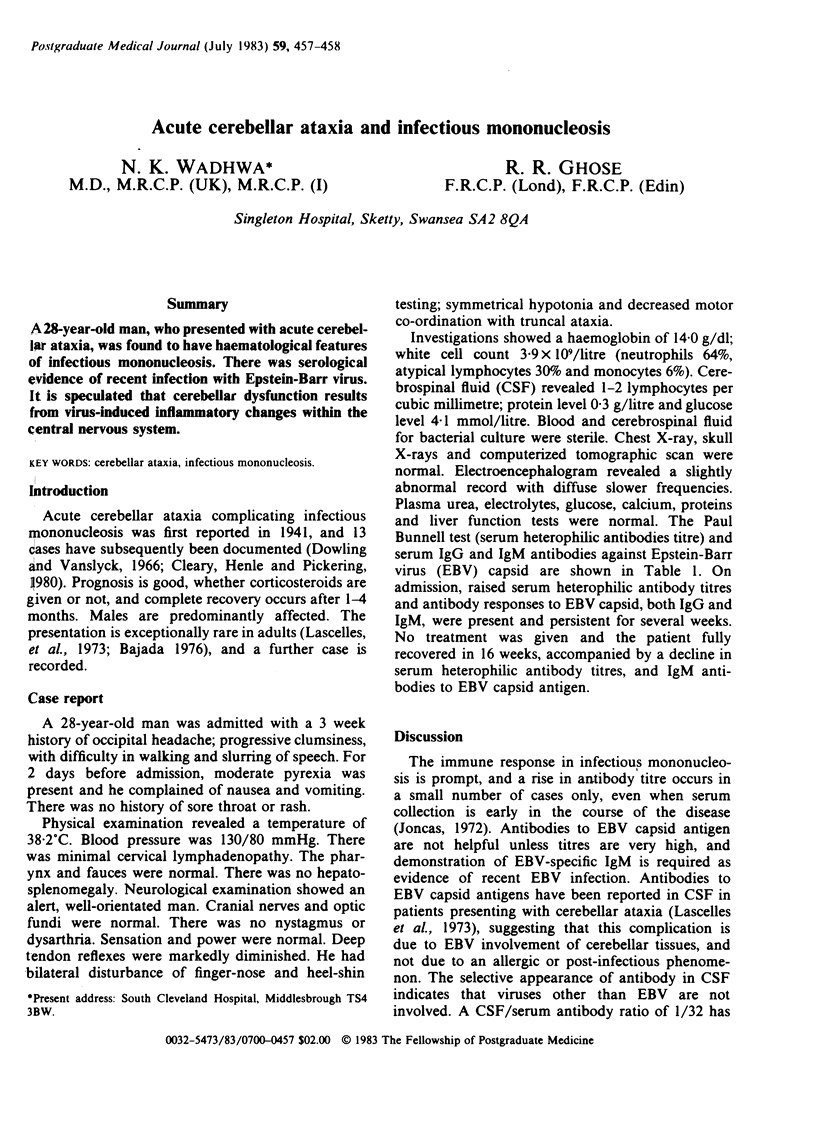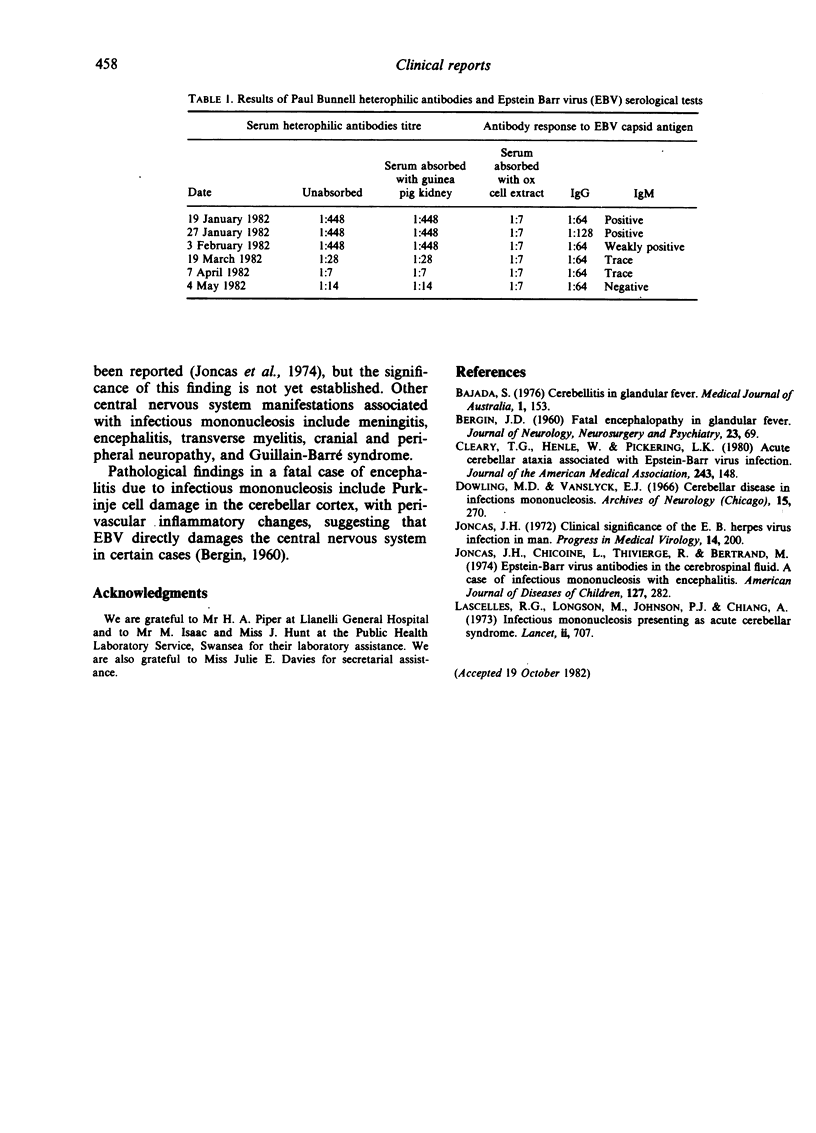Abstract
A 28-year-old man, who presented with acute cerebellar ataxia, was found to have haematological features of infectious mononucleosis. There was serological evidence of recent infection with Epstein-Barr virus. It is speculated that cerebellar dysfunction results from virus-induced inflammatory changes within the central nervous system.
Full text
PDF

Selected References
These references are in PubMed. This may not be the complete list of references from this article.
- Bajada S. Cerebellitis in glandular fever. Med J Aust. 1976 Feb 7;1(6):153–156. doi: 10.5694/j.1326-5377.1976.tb109315.x. [DOI] [PubMed] [Google Scholar]
- Cleary T. G., Henle W., Pickering L. K. Acute cerebellar ataxia associated with Epstein-Barr virus infection. JAMA. 1980 Jan 11;243(2):148–149. [PubMed] [Google Scholar]
- Dowling M. D., Jr, Van Slyck E. J. Cerebellar disease in infectious mononucleosis. Arch Neurol. 1966 Sep;15(3):270–274. doi: 10.1001/archneur.1966.00470150048008. [DOI] [PubMed] [Google Scholar]
- Joncas J. H., Chicoine L., Thivierge F., Bertrand M. Epstein-Barr virus antibodies in the cerebrospinal fluid. A case of infectious mononucleosis with encephalitis. Am J Dis Child. 1974 Feb;127(2):282–285. doi: 10.1001/archpedi.1974.02110210132021. [DOI] [PubMed] [Google Scholar]
- Joncas J. H. Clinical significance of the EB herpesvirus infection in man. Prog Med Virol. 1972;14:200–240. [PubMed] [Google Scholar]
- Lascelles R. G., Longson M., Johnson P. J., Chiang A. Infectious mononucleosis presenting as acute cerebellar syndrome. Lancet. 1973 Sep 29;2(7831):707–709. doi: 10.1016/s0140-6736(73)92540-3. [DOI] [PubMed] [Google Scholar]


